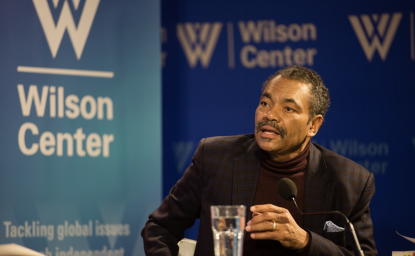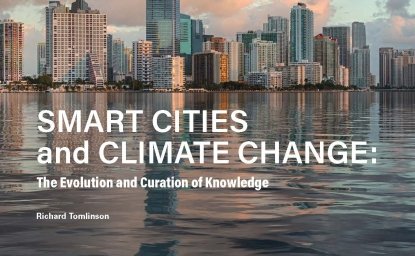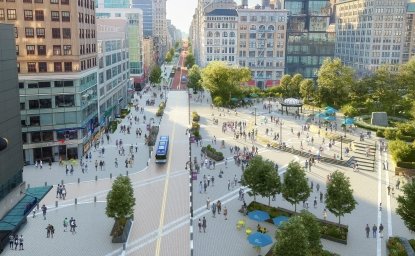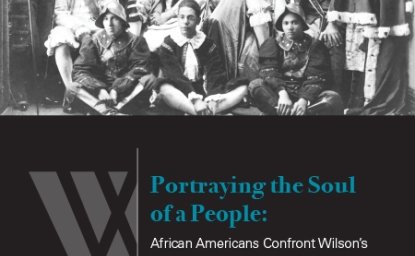Shortly after the completion of the Empire State Building, the novelist F. Scott Fitzgerald was shattered by a visit to its observation deck. “Full of vaunting pride,” he wrote, “the New Yorker had climbed here, and seen with dismay what he had never suspected. That the city was not the endless succession of canyons that he had supposed, but that it had limits, fading out into the country on all sides into an expanse of green and blue. That alone was limitless. And with the awful realization that New York was a city after all and not a universe, the whole shining edifice that he had reared in his mind came crashing down.”
The present is a moment when we view cities from even further away than the top of the Empire State Building. The central image of our age has become the bright necklace of electrical lights revealed in nighttime photographs of the earth taken from the cosmos. This new reality transforms every aspect of life, replacing the city as Fitzgerald knew it by a flowing global urban system. Cities have become limitless once again; and they have become our collective home. The world is now urban.
Present-day recognition of the importance of cities in the global agenda for inclusive and sustainable development is unprecedented. In September 2015, U.N. member states agreed on 17 global goals to end poverty, fight inequality and tackle climate change by 2030. Among the Sustainable Development Goals (SDGs), is an “urban” goal, “SDG Number 11” calling on the international community to make cities “inclusive, safe, resilient and sustainable.” A few months later, in October 2016, the United Nations’ HABITAT III conference – an international gathering convened every twenty years – adopted the “New Urban Agenda” which would further align domestic policies and international cooperation across the globe with the objectives of SDG11.
These United Nations declarations emerged from the concerted efforts of urban thinkers and practitioners around the world to place cities on the international agenda. Their hard work gained traction following recognition of an historic demographic shift sometime during the last decade when, for the first time in history, a majority of humans live in urban settlements. Further, it is expected that by the year 2050, 70 percent of the world population will be urban. Humankind is now an urban species; cities themselves have changed as traditional urban settlements have grown into sprawling, urbanized regions. These unprecedented circumstances require a reorientation of how we collectively think about the world.
Proclamation is laudable; action is essential (and considerably more elusive). Cities are the largest and arguably most complex product of human enterprise. As cities are made by humans, they necessarily are imperfect. As cities are complex, humans invariably struggle to bring the totality of urban reality into a single vision. We tend to isolate those aspects of urban life which give us pause, approaching with singular solutions and agendas intended to “fix” a particular urban condition. This piecemeal approach tends to distract us from the larger objective of nurturing cities as holistic places of promise.
Unlike a decade or so ago, the challenge is no longer that cities are being ignored. Notions of creative classes, triumphant cities, and winner-take-all urbanism abound. Political opponents of current national policies are looking to cities to right the ship of state with sanctuary cities, green cities and charitable cities. Urbanites and suburbanites struggle to define and redefine political institutions in an era when both have become co-dependently metropolitan. Some ask what the world would be like if it were ruled by mayors instead of by presidents; others are convinced that our salvation is to be found in making cities smart.
Each perspective has value intellectually and operationally; all somehow come up short when engaging our new urban condition. In thinking about the goal of promoting inclusive, safe, resilient and sustainable cities, perhaps we must ponder more meaningful criteria. The simplest test for delineating a helpful view might be to consider whether or not mothers would want their children to grow up in a given community. Meeting that standard depends on gaining grounds for opportunity and security. Recalibrating our ultimate goal – shifting from a view of cities as centers of efficient economic growth or as home to especially creative innovators to holistic places of promise – empowers us to reconsider the city as our primary habitat.
Unidimensional approaches to urban life drive us towards conventional hierarchies of smart technologies and innovations in governance, which, while laudable, are insufficient. As almost 180,000 people are added to the urban population each day, we need to plan for cities which do not yet exist. As ubiquitous proponents of new urban lifestyles fall into the fallacies of winner-take-all mentalities, we need to expand policy goals beyond favoring any particular group no matter how creative it may be. As we gather more and more information about cities we must remember that they are homes to millions and not merely data laboratories. As poverty spreads to the urban periphery, we need to embrace a vision of the city that extends well beyond fixed boundaries. As urban complexity abounds, we need to accept that no particular policy offers a cookie-cutter approach that will prove successful everywhere.
Philosophical reflection and debate on the nature of public purpose and public virtue is as pressing today as it has been across centuries. Today’s cities remain as rooted in time, place and culture as cities always have been. Even so, today’s urban challenge is universal. In trying to blend the universal and the particular, we need more humility. We must begin by recognizing that success in terms of making the city desirable requires dexterity, flexibility and pragmatism.
Now that we have become urban , humans must embrace a more fulsome vision of the city. Not so long ago, we came to think of cities as places with limits – if not natural at least political and administrative – which faded into the green and blue of the countryside. Once we bound the city within ever tight definitions, urban life came to be viewed as somehow abnormal. The now ubiquitous view from outer space at night erases all such boundaries. Today, our concepts and policies must follow.
Author

Former Wilson Center Vice President for Programs (2014-2017); Director of the Comparative Urban Studies Program/Urban Sustainability Laboratory (1992-2017); Director of the Kennan Institute for Advanced Russian Studies (1989-2012) and Director of the Program on Global Sustainability and Resilience (2012-2014)

Urban Sustainability Laboratory
Since 1991, the Urban Sustainability Laboratory has advanced solutions to urban challenges—such as poverty, exclusion, insecurity, and environmental degradation—by promoting evidence-based research to support sustainable, equitable and peaceful cities. Read more

Explore More
Browse Insights & Analysis
Dr. Maurice Jackson: The Sounds of Resistance Throughout History

Smart Cities and Climate Change: The Evolution and Curation of Knowledge


